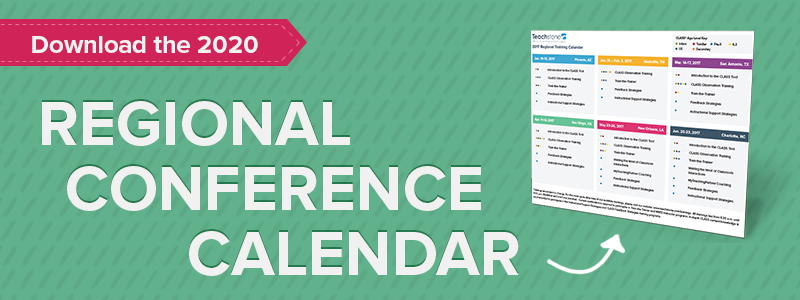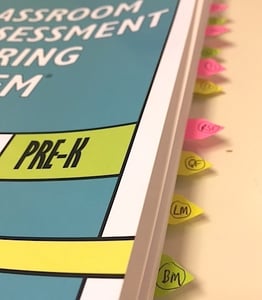
Let’s skip past all the reasons reliability on the CLASS measure is super important. Your CLASS trainees already know that improving teaching starts with gathering fair and valid observation data—hence the dreaded CLASS reliability test, to prove their coding skills are on point.
Your trainees might be nervous about the test, but as they're reading up on the CLASS manual, watching practice videos, and emailing reliability support when they get stuck—generally just making sure their CLASS lens is polished and ready to be put to the test—they're ready. Almost.
Just like anything worth doing, there’s no substitute for the hard work of thorough preparation (I’m talking to you, CliffsNotes), but there are a few things your trainees can do to make taking the reliability test, and CLASS coding in general, a little easier. Here are a few of my favorite hacks.
#1 - Review (maybe even print out) these “cheat sheets”
CLASS isn’t a checklist, but the quality, frequency, and duration of effective interactions is what separates a low-range score from a high-range score. Sometimes we can get excited when we spot an indicator of effective interaction (“She and the child both laughed! That’s matched affect, an indicator of Positive Climate!”), but we have to remember to look at an observation holistically. If a teacher displays matched affect once during an entire observation, that doesn’t necessarily qualify her for a high-range score. If she frequently or consistently matches her affect to the children in her care—well, that’s another story.
That’s where this chart comes in handy. It breaks down the words we can associate with low-, mid-, and high-range scores and makes for a helpful companion as your trainees assign score ranges to indicators:
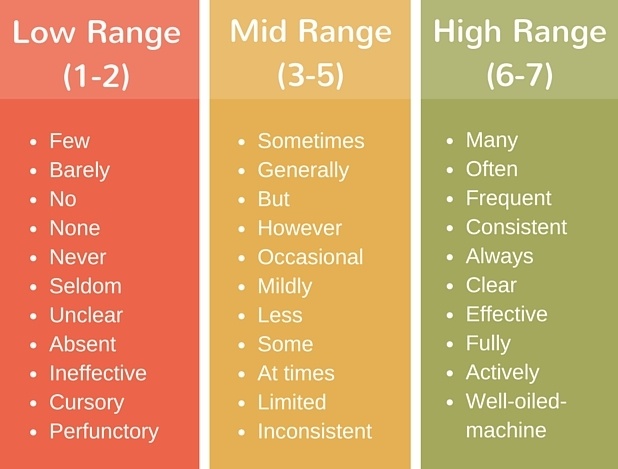
After identifying ranges for indicators, the next step is assigning specific numerical scores to CLASS dimensions, which can get tricky. Luckily, there is a science to CLASS, and the CLASS manual comes with a chart that breaks down each number value on page 17:
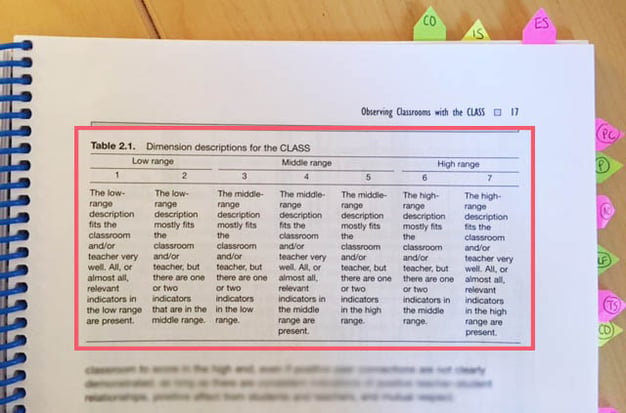
Recommend that your trainees keep this chart handy during the test. I took this advice and found it super helpful. They can also attach a copy of this chart to their clipboards for easy reference during live observations to ensure objective scoring.
#2 - Meet your new BFF: tabs
During CLASS training, you may give your trainees a little kit of tabs and post-it notes. Remind them that these aren't just nifty souvenirs or a convenient new place to jot down your grocery list (though both are valid uses). Emphasize that the tabs in this kit—or any tabs for that matter—are actually PERFECT for organizing the CLASS manual so that when trainees take the test, they don’t have to constantly flip through the book to find the dimension in question.
Everyone has their own creative and organizational habits, but here’s how I organized my manual:

I put domains at the top, then added tabs for each dimension with abbreviations (PC for Positive Climate, ILF for Instructional Learning Formats, etc.). For extra fun—and because I’m a teensy bit obsessive—I even color-coded by domain. The tabs not only help with the test, but are also fantastic during live coding.
#3 - Get crafty with your score sheets
Trainees also should use highlighters during training. You don’t need me to tell you that highlighting important text in the manual will draw trainees' eye to it during the reliability test for things that might trip them up. But beyond that, they can also use highlighters to customize score sheets to their note-taking preferences.
Per my trainer's recommendations, I take my notes on what I see in the videos by dimension. To keep me on track, I use the different colors of the highlighter to break down the notes section of the score sheets accordingly.
Here’s what my score sheets look like:

I find that if I’m prepared, I generally know where to place an example of an interaction, but sometimes I need more time to think about exactly what dimension that example belongs in. In that case, I just put the note at the top (in Misc.) and then place it after the video ends. This also helps me consider what might not fit into the CLASS at all if I’m not sure during the video.
#4 - Read mid-range descriptions first
As you know, the CLASS manual contains descriptions of low-, mid-, and high-range interactions for each dimension. Even if your trainees have done a lot of advance prep, having these descriptions at their fingertips during the reliability test can be a life-saver; it can also be a LOT to read. It's unrealistic to read every description for every dimension for every interaction within a coding video. So how can you teach your trainees to prioritize?
Tell them to start with the mid-range descriptions. This will provide a good anchor around which they can start tailoring their score. If they read a mid-range description and it describes interactions that are far more effective than what they see, they should know to read the low-range next.
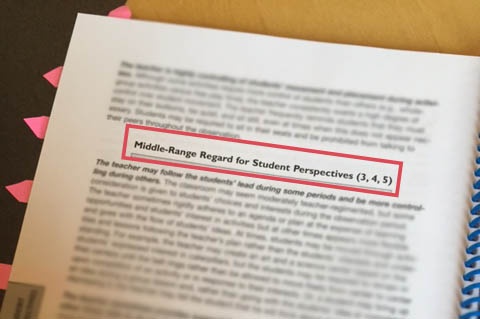
#5 - Score Instructional Support first
Instructional Support can be a tricky CLASS domain, for teachers, mentors, and observers alike. It’s nuanced. It's complex. Plus, many of us didn’t encounter effective Instructional Support interactions when we were students so we lack internal models of what these interactions should look like.
In addition to recommending that your trainees spend extra time watching exemplars of Instructional Support in the Video Library, suggest that they try scoring dimensions in the Instructional Support domain for each video in the test first. This way, they're using their brains while they're freshest to tackle the hardest coding challenge first.
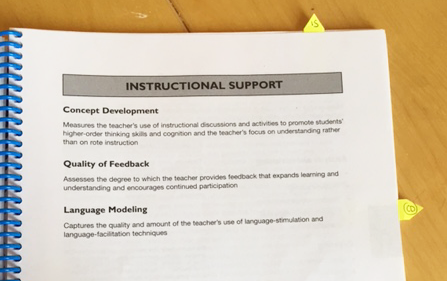
These are just a few of my favorite “hacks” for the CLASS reliability test, but just like our trainees, we all have our unique styles, tastes, and preferences. I’d love to hear from other trainers out there what tricks you suggest to help trainees pass the test. Share yours in the comments below!

